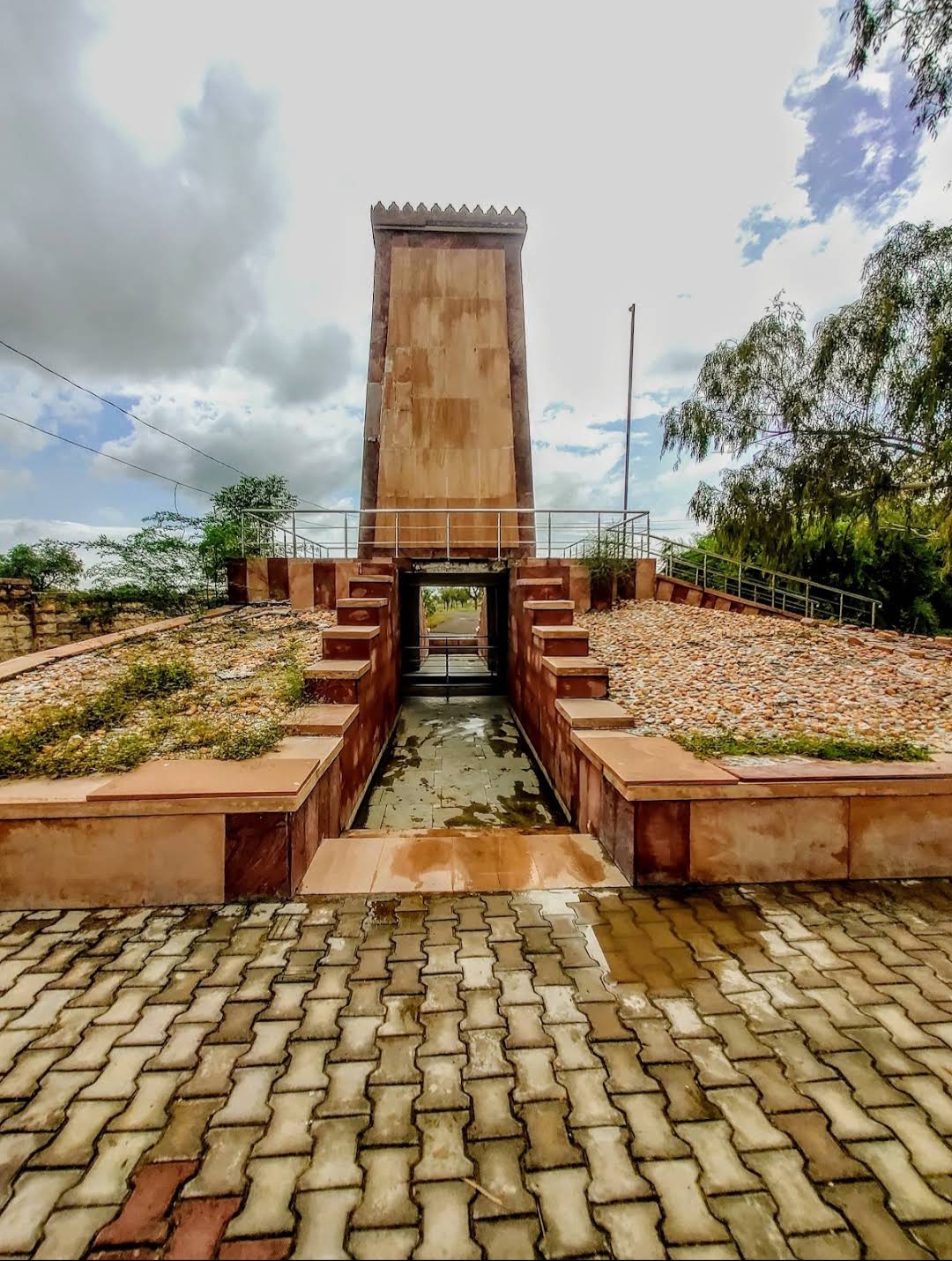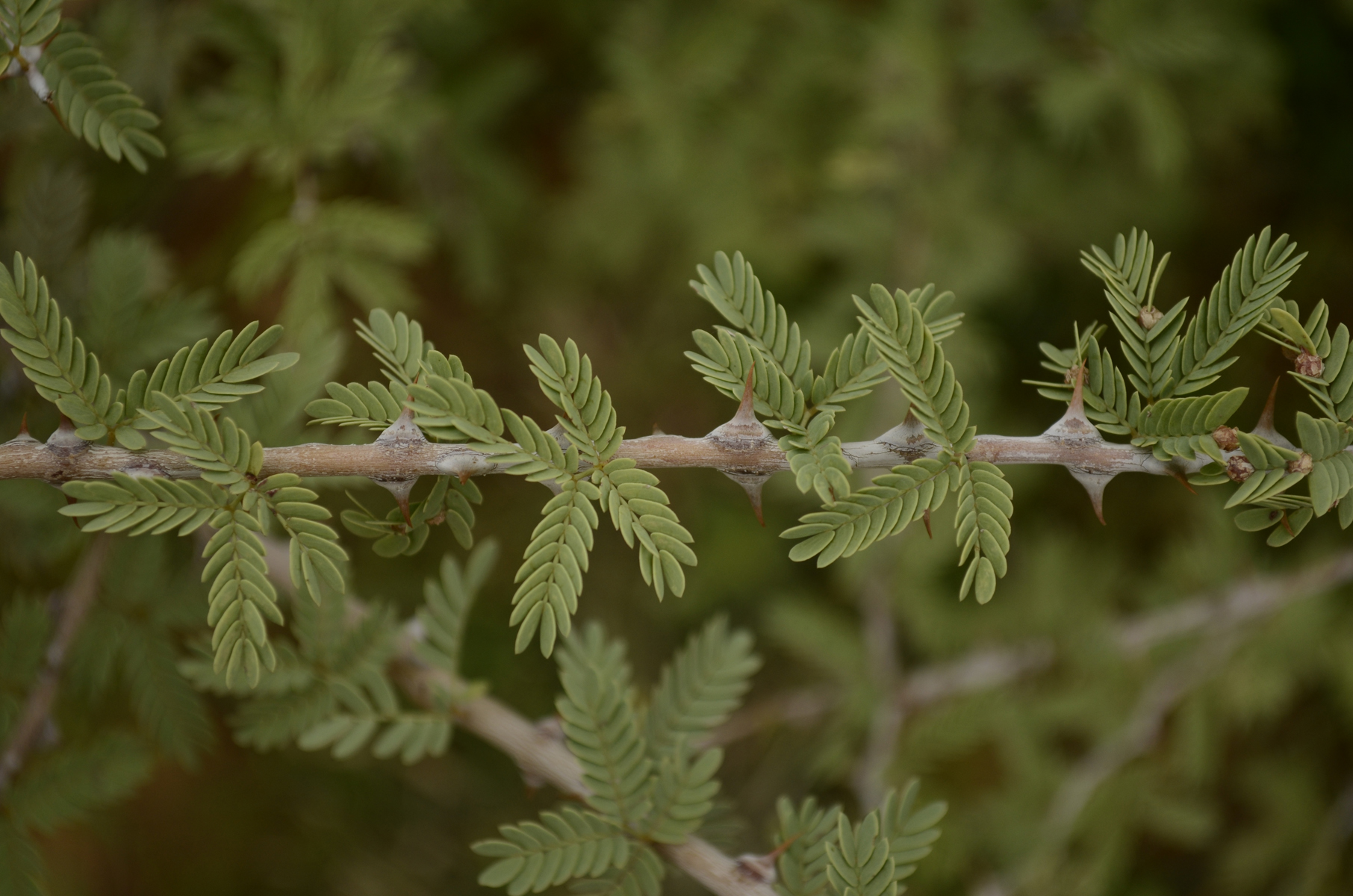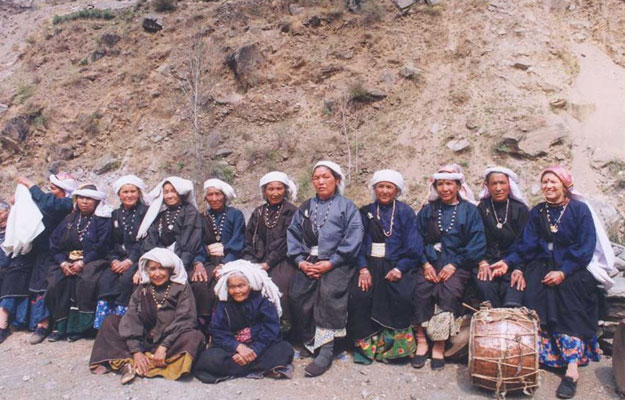|
Khejarli
Khejarli or Khejadli is a village in Jodhpur district of Rajasthan, India, south-east of the city of Jodhpur. The name of the town is derived from the khejri (''Prosopis cineraria)'' trees that were once abundant in the village. In this village 363 Bishnois sacrificed their lives in 1730 AD while protecting green khejri that are considered sacred by the community. The incident was a forebear of the 20th-century Chipko Movement. History Thakur Surat Singh, of Kharda thikana, a small estate in Jodhpur pargana. was granted the estate of Khejarli in the same pargana, by Maharaja Abhai Singh of Marwar in 1726 AD, and he became the first 'Thakur of Khejarli'. Khejarli Massacre Khejarli was the site of a forebear of the Chipko movement. On 12 september 1730, a royal party led by Giridhar Bhandari, a minister of the maharajah of Marwar, arrived at the village with the intention of felling some khejri trees that were sacred to the villagers. The trees were to be burned to produce ... [...More Info...] [...Related Items...] OR: [Wikipedia] [Google] [Baidu] |
Khejarli Massacre
The Khejarli massacre occurred in September 1730 in Northern India, when 363 Bishnois were killed while trying to peacefully protect a grove of Khejri trees. The soldiers were sent by the Maharaja of Marwar, Abhai Singh to cut the trees in the village of Khejarli to provide wood for a new palace. The killings were carried out on the orders of his minister Giridhar Bhandari. The effort had a long term impact on environmental advocacy, and the massacre later became known as a precursor to the 20th century Chipko movement. Due to the sacrifice of the protesters, the ruler took back his earlier order of felling trees. History In 1726, Abhai Singh of Marwar gained control of the village of Khejarli, also known as Jalnadiya Khejarli, District-Jodhpur। in Rajasthan।. In 1730, he dispatched one of his ministers, Giridhar Bhandari, to collect wood to be used in the construction of a new palace; some sources report that the wood was needed to build the palace, while others note t ... [...More Info...] [...Related Items...] OR: [Wikipedia] [Google] [Baidu] |
Amrita Devi Bishnoi
The Khejarli massacre occurred in September 1730 in Northern India, when 363 Bishnois were killed while trying to peacefully protect a grove of Khejri trees. The soldiers were sent by the Maharaja of Marwar, Abhai Singh to cut the trees in the village of Khejarli to provide wood for a new palace. The killings were carried out on the orders of his minister Giridhar Bhandari. The effort had a long term impact on environmental advocacy, and the massacre later became known as a precursor to the 20th century Chipko movement. Due to the sacrifice of the protesters, the ruler took back his earlier order of felling trees. History In 1726, Abhai Singh of Marwar gained control of the village of Khejarli, also known as Jalnadiya Khejarli, District-Jodhpur। in Rajasthan।. In 1730, he dispatched one of his ministers, Giridhar Bhandari, to collect wood to be used in the construction of a new palace; some sources report that the wood was needed to build the palace, while others note the ... [...More Info...] [...Related Items...] OR: [Wikipedia] [Google] [Baidu] |
Bishnoi
Bishnoi (also known as Vishnoi) is a community found in the Western Thar Desert and northern states of India. They follow a set of 29 principles/commandments given by Guru Jambheshwar (also known as Guru Jambhoji, Guru Jambha Ji) (1451-1536). They are a sub-sect of the Vaishnav Sampraday. As of 2019, there are an estimated 600,000 followers of Bishnoi Panth residing in north and central India.Akash KapurA Hindu Sect Devoted to the Environment New York Times, 8 Oct 2010. Shree Guru Jambheshwar founded the sect at Samrathal Dhora in 1485 and his teachings, comprising 120 shabads, are known as ''Shabadwani''. He preached for the next 51 years, travelling across India. The preaching of Guru Jambhoji inspires his followers as well as the environmental protectors. Bishnoi sect admitted members from a variety of castes including Jats, Bania, Charans, Rajputs, and Brahmins. Background Etymology Guru Jambheshwar gave his followers 29 precepts, bis means 20 in the local dialect and ... [...More Info...] [...Related Items...] OR: [Wikipedia] [Google] [Baidu] |
Abhai Singh Of Marwar
Maharaja Abhai Singh Rathore (7 November 1702 – 18 June 1749) was the Raja of Marwar (Jodhpur) Kingdom 24 June 1724 – 18 June 1749.N.S. Bhati, Studies in Marwar History, page 6 Coronation Abhai Singh was crowned on the death of his father Maharaja Ajit Singh, who was killed as a result of a conspiracy between Abhai Singh and Bakht Singh. Khejarli massacre In 1726, Maharaja Abhai Singh of Marwar granted the estate of Khejarli to Thakur Surat Singh, who became the first 'Thakur of Khejarli.' In 1730, under his order, minister Giridhar Bhandari led a royal party to Khejarli village to fell some Khejri trees that were sacred to the villagers. The trees were to be burned to produce lime for constructing a new palace. A local woman called Amrita Devi Bishnoi protested the tree-felling because such acts were prohibited by the Bishnoi's religion. The feudal party said they would not cut the trees if she paid a bribe, which she refused to do since she saw such an exchange a ... [...More Info...] [...Related Items...] OR: [Wikipedia] [Google] [Baidu] |
Cenotaph Of Khejarli
A cenotaph is an empty tomb or a monument erected in honour of a person or group of people whose remains are elsewhere. It can also be the initial tomb for a person who has since been reinterred elsewhere. Although the vast majority of cenotaphs honour individuals, many noted cenotaphs are instead dedicated to the memories of groups of individuals, such as the lost soldiers of a country or of an empire. Etymology The word "cenotaph" in the English Language is derived from the Greek el, κενοτάφιον, kenotaphion, label=none. It is a compound word that is created from the morphological combination of two root words: # el, κενός, kenos, label=none meaning "empty" # el, τάφος, taphos, label=none meaning "tomb", from el, θαπτω, thapto, I bury, label=none History Cenotaphs were common in the ancient world. Many were built in Ancient Egypt, Ancient Greece and across Northern Europe (in the shape of Neolithic barrows). The cenotaph in Whitehall, Lon ... [...More Info...] [...Related Items...] OR: [Wikipedia] [Google] [Baidu] |
Khejri
''Prosopis cineraria'', also known as ghaf, is a species of flowering tree in the pea family, Fabaceae. It is native to arid portions of Western Asia and the Indian Subcontinent, including Afghanistan, Bahrain, Iran, India, Oman, Pakistan, Saudi Arabia, the United Arab Emirates and Yemen. Its leaves are shattered and stripy along its branch. It can survive extreme drought. It is an established introduced species in parts of Southeast Asia, including Indonesia. The ʿGhaf is the national tree of the United Arab Emirates. Through the ''Give a Ghaf campaign'' its citizens are urged to plant it in their gardens to combat desertification and to preserve their country's heritage. The desert village of Nazwa in the UAE is home to the Al Ghaf Conservation Reserve. ''Prosopis cineraria'' is also the state tree of Rajasthan (where it is known as Khejri), Western Uttar Pradesh (where it is known as Chhonkara) and Telangana (where it is known as ''Jammi'' ) in India. A larg ... [...More Info...] [...Related Items...] OR: [Wikipedia] [Google] [Baidu] |
Chipko Movement
The Chipko movement ( hi, chipko andolan, italic=yes, lit= reehugging movement) is a forest conservation movement in India. The movement originated in 1973 at the Himalayan region of Uttarakhand (then part of Uttar Pradesh) and went on to become a rallying point for many future environmental movements all over the world by Sunderlal Bahuguna. It created a precedent for starting nonviolent protest in India. However, it was Sunderlal Bahuguna, a Gandhian activist, who gave the movement a proper direction and its success meant that the world immediately took notice of this non-violent movement, which was to inspire in time many similar eco-groups to help slow down rapid deforestation, expose vested interests, increase social awareness and the need to save trees, increase ecological awareness, and demonstrate the viability of people power. He used the slogan "Ecology is the permanent economy". Above all, it stirred up the existing civil society in India, which began to address th ... [...More Info...] [...Related Items...] OR: [Wikipedia] [Google] [Baidu] |
Prosopis Cineraria
''Prosopis cineraria'', also known as ghaf, is a species of flowering tree in the pea family, Fabaceae. It is native to arid portions of Western Asia and the Indian Subcontinent, including Afghanistan, Bahrain, Iran, India, Oman, Pakistan, Saudi Arabia, the United Arab Emirates and Yemen. Its leaves are shattered and stripy along its branch. It can survive extreme drought. It is an established introduced species in parts of Southeast Asia, including Indonesia. The ʿGhaf is the national tree of the United Arab Emirates. Through the ''Give a Ghaf campaign'' its citizens are urged to plant it in their gardens to combat desertification and to preserve their country's heritage. The desert village of Nazwa in the UAE is home to the Al Ghaf Conservation Reserve. ''Prosopis cineraria'' is also the state tree of Rajasthan (where it is known as Khejri), Western Uttar Pradesh (where it is known as Chhonkara) and Telangana (where it is known as ''Jammi'' ) in India. A large and well ... [...More Info...] [...Related Items...] OR: [Wikipedia] [Google] [Baidu] |
Chipko Movement
The Chipko movement ( hi, chipko andolan, italic=yes, lit= reehugging movement) is a forest conservation movement in India. The movement originated in 1973 at the Himalayan region of Uttarakhand (then part of Uttar Pradesh) and went on to become a rallying point for many future environmental movements all over the world by Sunderlal Bahuguna. It created a precedent for starting nonviolent protest in India. However, it was Sunderlal Bahuguna, a Gandhian activist, who gave the movement a proper direction and its success meant that the world immediately took notice of this non-violent movement, which was to inspire in time many similar eco-groups to help slow down rapid deforestation, expose vested interests, increase social awareness and the need to save trees, increase ecological awareness, and demonstrate the viability of people power. He used the slogan "Ecology is the permanent economy". Above all, it stirred up the existing civil society in India, which began to address th ... [...More Info...] [...Related Items...] OR: [Wikipedia] [Google] [Baidu] |
Jodhpur
Jodhpur (; ) is the second-largest city in the Indian state of Rajasthan and officially the second metropolitan city of the state. It was formerly the seat of the princely state of Jodhpur State. Jodhpur was historically the capital of the Kingdom of Marwar, which is now part of Rajasthan. Jodhpur is a popular tourist destination, featuring many palaces, forts, and temples, set in the stark landscape of the Thar Desert. It is popularly known as the "Blue City" among people of Rajasthan and all over India. It serves as the administrative headquarters of the Jodhpur district and Jodhpur division. The old city circles the Mehrangarh Fort and is bounded by a wall with several gates. The city has expanded greatly outside the wall, though over the past several decades. Jodhpur lies near the geographic centre of the Rajasthan state, which makes it a convenient base for travel in a region much frequented by tourists. The city featured in ''The New York Timess "52 Places to Go i ... [...More Info...] [...Related Items...] OR: [Wikipedia] [Google] [Baidu] |
Jodhpur District
Jodhpur District is a district in the State of Rajasthan in western India. The city of Jodhpur is the administrative headquarters of the district. As of the 2011 census, it is the second highest populated district of Rajasthan (out of 33), after Jaipur district. Jodhpur is the historic center of the Marwar region. The district contains Mandore, the ancient capital of the Pratihara Rajput kings (6th-13th centuries), and the Pratiharas' temple city of Osiyan. Jodhpur was founded in the 15th century by Rao Jodha, and served as the capital of the kingdom of Marwar under the Rathore dynasty until after Indian Independence in 1947. Geography The district is located in the State of Rajasthan in western India. Bikaner_District.html" ;"title="he district is bounded on the north by Bikaner District">he district is bounded on the north by Bikaner District, on the northeast by Nagaur District, on the southeast and south by Pali District, on the southwest by Barmer District, and on ... [...More Info...] [...Related Items...] OR: [Wikipedia] [Google] [Baidu] |








